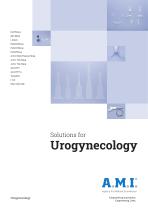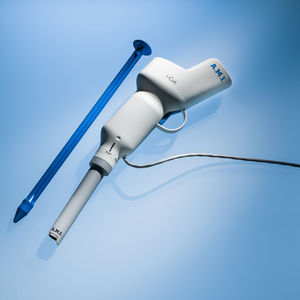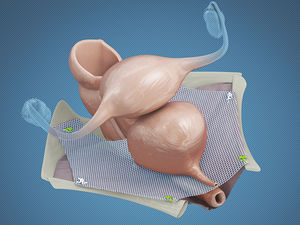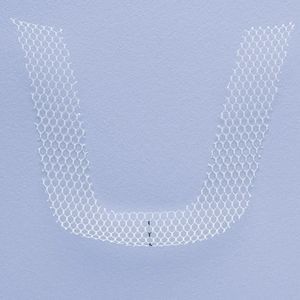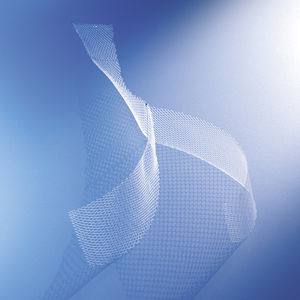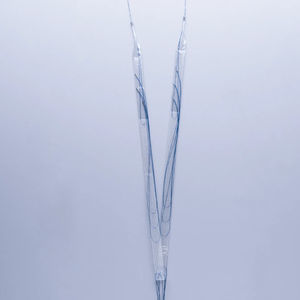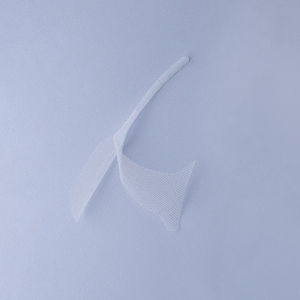
- Secondary care
- Urology
- Prolapse reconstruction mesh
- AMI - Agency for Medical Innovations
Prolapse reconstruction mesh PelviGYNiouscystocelerectocelelaparoscopic approach
Add to favorites
Compare this product
fo_shop_gate_exact_title
Characteristics
- Mesh type
- prolapse
- Type of prolapse
- cystocele, rectocele
- Surgical technique
- laparoscopic approach
- Patient type
- women
Description
Surgical treatment (laparotomy or laparoscopic approach) of symptomatic POP, restricted to
cervical-, or
vault prolapse,
cystocele or
rectocele,
with or without urinary incontinence.
Treatment of Pelvic Organ Prolapse
Transabdominal mesh implant for surgical treatment of female pelvic organ prolapse (POP).
Two, differently shaped meshes with hexagonal structure
For well-established procedures sacrocolpopexy and sacrocervicopexy in pelvic organ prolapse surgery
Ultralight, monofilament, polypropylene mesh with hexagonal structure
Features
Implantation via laparoscopic or transabdominal (open surgery) approach
Implant is made of lightweight, wide-pore, biocompatible monofilament mesh material.
Benefits
Can successfully cure patients with pelvic organ prolapse
Low rates of erosion in a 3-month follow-up period (< 3%)
Functioning principles of PelviGYNious
Sacrocolpopexy and Sacrocervicopexy
Anterior mesh is placed between vagina and bladder to prevent from recurrent cystocele
Posterior mesh is placed between vagina and rectum to prevent from recurrent rectocele
Following anterior and posterior vaginal wall preparation, PelviGYNious is attached to the vaginal tissue and/or cervix.
The proximal ends of both meshes are fixed to the longitudinal ligament at the level of sacral promontory.
Low rates of severe postoperative pain in a 3-month follow-up period (< 3%)
Catalogs
Solutions for Urogynecology
36 Pages
Other AMI - Agency for Medical Innovations products
Urogynaecology
Related Searches
- Reconstruction mesh
- Women reconstruction mesh
- Urinary incontinence reconstruction mesh
- Prolapse reconstruction mesh
- Transobturator approach reconstruction mesh
- Vaginal approach reconstruction mesh
- Morcellator
- Cystocele reconstruction mesh
- Laparoscopic approach reconstruction mesh
- Uterine morcellator
- Colpocele reconstruction mesh
- Rectocele reconstruction mesh
- Retropubic approach reconstruction mesh
- Sphincter prosthesis
- Urinary incontinence sphincter prosthesis
- Vesical sphincter prosthesis
*Prices are pre-tax. They exclude delivery charges and customs duties and do not include additional charges for installation or activation options. Prices are indicative only and may vary by country, with changes to the cost of raw materials and exchange rates.


